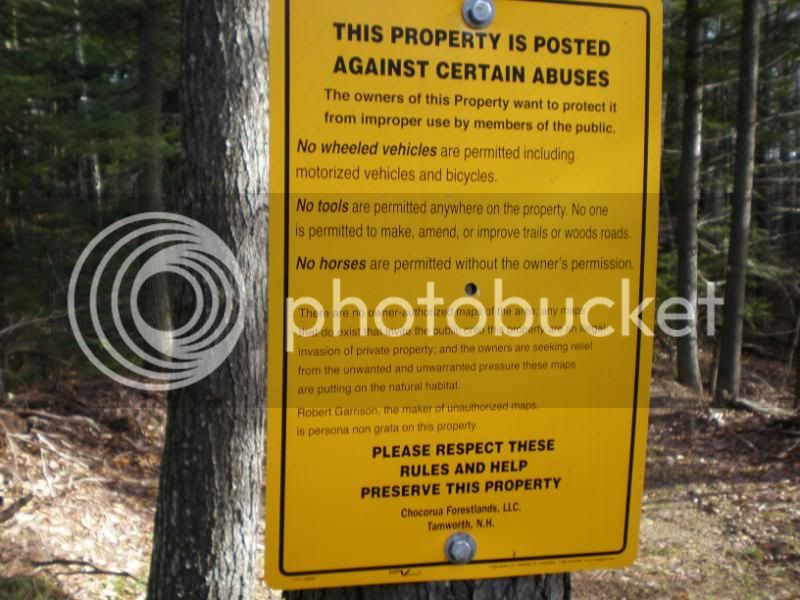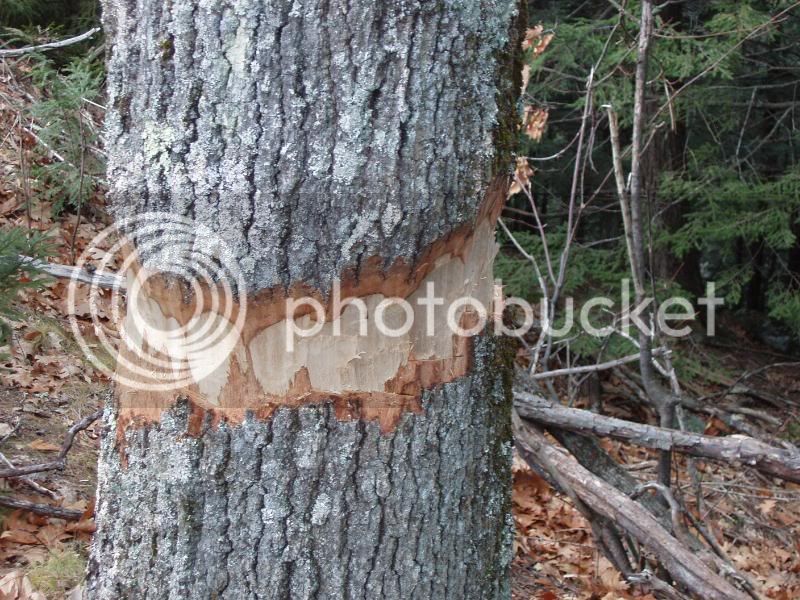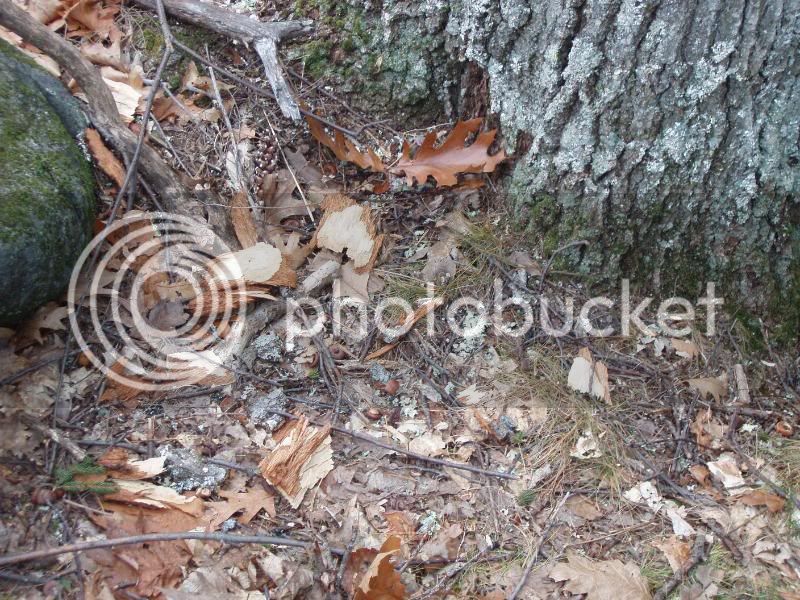The Hikers
New member
Friday we headed out to the Ossipees to climb Bayle, Sentinel and other small mountains we hadn't visited yet. Not too far from the trailhead for Bayle we came across what I still think is the stupidest sign I have seen on a hike, but it was to gain importance before our hikes were over.

Bayle is a beutiful open mountain with great views all around. We found a short cut up and down a ridge which made it a semi-bushwack. From there we headed over to go up Sentinel, after having lunch in the car. Sentinel is a great climb with more great views. I include one here, though this is not intended to be a trip report as such.

Before we headed out, I noticed something just off the summit that I hadn't seen before:




Now , when I was young, we used to call this "girdling". Anyway, the result is the intentional killing of the tree. You can see by the marks that the work was done by a hatchet or curved cutter such as used in blazing. In fact, we saw similar marks in association with colored blazes on marked trees as we decended from the summit.
Who did this work , or why it was done I can only speculate, but given the problems here in the past ,placing the blame could have far-reaching consequences.
At any rate we were appalled to see this done. One of the trees was quite large and well-developed, and obviously was alive as some leaves still clung to its branches.
Now we can only wonder who wielded the illegal tools.

Bayle is a beutiful open mountain with great views all around. We found a short cut up and down a ridge which made it a semi-bushwack. From there we headed over to go up Sentinel, after having lunch in the car. Sentinel is a great climb with more great views. I include one here, though this is not intended to be a trip report as such.

Before we headed out, I noticed something just off the summit that I hadn't seen before:




Now , when I was young, we used to call this "girdling". Anyway, the result is the intentional killing of the tree. You can see by the marks that the work was done by a hatchet or curved cutter such as used in blazing. In fact, we saw similar marks in association with colored blazes on marked trees as we decended from the summit.
Who did this work , or why it was done I can only speculate, but given the problems here in the past ,placing the blame could have far-reaching consequences.
At any rate we were appalled to see this done. One of the trees was quite large and well-developed, and obviously was alive as some leaves still clung to its branches.
Now we can only wonder who wielded the illegal tools.
